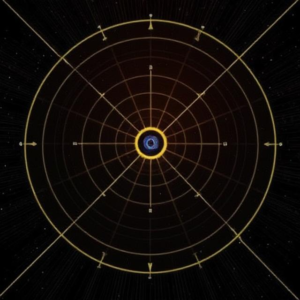A Free Body Diagram (FBD) is a simple way to represent all the forces acting on an object. It helps engineers and physicists understand how different forces affect the movement or behavior of an object.

What is a Free Body Diagram?
A Free Body Diagram is a graphical representation that shows:
- An object (or system): Often shown as a simple shape like a box or a dot.
- All the forces acting on that object: Forces are represented by arrows pointing in the direction they are acting, and the size of the arrow indicates the magnitude (strength) of the force.
Key Steps to Draw a Free Body Diagram:
- Identify the Object: Focus on the object you want to analyze. For example, a block on a surface.
- Isolate the Object: Imagine cutting the object out from its environment and showing only the forces acting on it.
- Draw the Object: Represent it as a simple shape (e.g., box, circle, etc.).
- Show All Forces: Draw arrows to represent forces acting on the object. Label each force (e.g., gravitational force, normal force, friction, tension, etc.).
- Label the Directions and Magnitudes: Indicate the direction of each force with arrows, and if you know the magnitude, you can label it with numbers.
Types of Forces in an FBD:
- Gravitational Force (Weight): The force due to gravity acting downward on the object.
- Normal Force: The support force from a surface that acts perpendicular to the surface.
- Frictional Force: The force that resists the sliding of the object against a surface.
- Tension Force: The force transmitted through a string, rope, or cable.
- Applied Force: A force that is applied by someone or something to move the object.
- Air Resistance: The force acting opposite to the direction of motion through air.
Example 1: Block on a Flat Surface
Imagine a block placed on a flat surface. The block is not moving.
Steps to draw the FBD:
- Identify the object: The block on the surface.
- Isolate the object: Focus only on the block.
- Draw the object: Draw a simple box to represent the block.
- Show the forces:
- The gravitational force acts downward (toward the center of the Earth).
- The normal force acts upward from the surface, balancing the weight of the block.
- There is no friction if the block is stationary and no external forces are acting.
The Free Body Diagram would look like this:
- An arrow pointing downward for the weight.
- An arrow pointing upward for the normal force (equal in size to the weight).
Since the block is stationary, these forces cancel each other out, meaning the object is in equilibrium.
Example 2: Block Sliding on a Surface
Now, imagine the same block is being pushed with a force, and it’s sliding across the surface. You want to find out how the forces affect its motion.
Steps to draw the FBD:
- Identify the object: The block sliding on the surface.
- Isolate the object: Focus on the block.
- Draw the object: Draw a simple box to represent the block.
- Show the forces:
- The gravitational force acts downward.
- The normal force acts upward.
- The frictional force resists the motion of the block and acts opposite to the direction of the applied force.
- The applied force (a push) is acting horizontally in the direction the block is moving.
The Free Body Diagram for the sliding block would look like this:
- An arrow pointing downward for the weight.
- An arrow pointing upward for the normal force.
- An arrow pointing to the left or right for the applied force.
- An arrow pointing opposite to the applied force for friction.
Here, the applied force tries to move the block, while friction opposes the motion. If the applied force is greater than the friction, the block will accelerate.
Example 3: Hanging Object (Tension)
Imagine an object hanging from a rope.
Steps to draw the FBD:
- Identify the object: The object hanging from the rope.
- Isolate the object: Focus on the hanging object.
- Draw the object: Draw a box or circle to represent the object.
- Show the forces:
- The gravitational force acts downward.
- The tension force in the rope acts upward.
The Free Body Diagram for the hanging object would look like this:
- An arrow pointing downward for weight.
- An arrow pointing upward for tension.
If the object is stationary, then the tension in the rope exactly balances the gravitational force. If the object accelerates, the forces are unbalanced, and the object will move.
Solving Problems Using Free Body Diagrams
Once you have the Free Body Diagram, you can use it to solve problems by applying Newton’s laws of motion:
- Newton’s 1st Law (Law of Inertia): An object will remain at rest or in constant motion unless acted upon by an unbalanced force.
- Newton’s 2nd Law (F = ma): The acceleration of an object is directly proportional to the net force acting on it and inversely proportional to its mass.
- Newton’s 3rd Law (Action and Reaction): For every action, there is an equal and opposite reaction.
For example, in the case of the block sliding on the surface:
- The net force (the applied force minus the frictional force) determines the acceleration of the block.
- Using
, you can calculate the acceleration if you know the forces and the mass of the object.
Sample Problem:
Problem: A 10 kg block is being pulled with a force of 30 N on a flat surface. The coefficient of friction between the block and the surface is 0.2. What is the acceleration of the block?
Step 1: Draw the Free Body Diagram:
- The gravitational force (weight) is
downward.
- The normal force
is 98 N upward (since the block is on a horizontal surface and there’s no vertical motion).
- The applied force is 30 N to the right.
- The frictional force
to the left.
Step 2: Use Newton’s 2nd law to calculate the acceleration:
- The net force in the horizontal direction is
.
- The acceleration
.
Answer: The acceleration of the block is
.
Conclusion
Free Body Diagrams are incredibly helpful for understanding how forces affect objects. By following simple steps—identifying forces, drawing arrows, and using Newton’s laws—you can solve a wide range of physics problems. Whether it’s a block on a surface or an object in motion, FBDs provide a clear visual tool to analyze and calculate the motion of objects.











